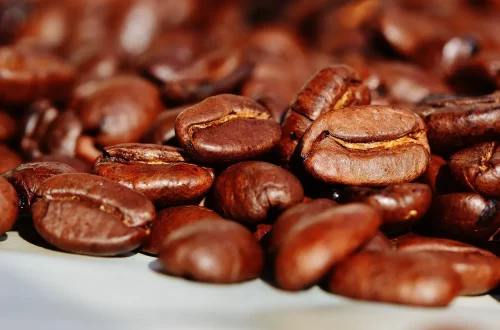
The Allure of Cardamom Fragrance: A Journey Through Its Aromatic Benefits
Cardamom, often referred to as the “queen of spices,” has an intriguing legacy that transcends time and geography. Its unique aroma has charmed cultures across the globe, from ancient civilizations to modern culinary arts. The rich, warm scent of cardamom is not only delightful but also intricately tied to a variety of applications, ranging from perfumery to holistic wellness. The allure of its fragrance captivates the senses, invoking feelings of comfort, warmth, and nostalgia.
As one inhales the essence of cardamom, memories of exotic markets and fragrant kitchens may come rushing back, underscoring its deep-rooted connection with many culinary traditions. Beyond its aromatic qualities, cardamom is a symbol of luxury and refinement, often used in gourmet dishes and premium beverages. Its versatility makes it a staple in both sweet and savory recipes, enhancing flavors and elevating the dining experience.
In addition to its culinary prowess, cardamom’s fragrance is celebrated in the world of aromatherapy. Many believe that inhaling its scent can promote relaxation, improve mood, and even aid in various health-related concerns. This multifaceted spice, with its alluring aroma, is more than just a flavor enhancer; it is a sensory experience that nourishes the mind and body.
The Unique Aroma of Cardamom
Cardamom’s distinctive fragrance is a harmonious blend of sweet, spicy, and floral notes, making it one of the most beloved spices in the world. The essential oils contained within cardamom pods are responsible for its captivating scent, which can vary depending on the variety and processing methods. Green cardamom, the most common type, boasts a bright and zesty aroma, while black cardamom has a more smoky and earthy fragrance.
The process of harvesting and processing cardamom pods plays a crucial role in preserving their aromatic qualities. Traditionally, cardamom is hand-harvested to ensure that the pods are picked at their peak ripeness. This meticulous attention to detail allows for the retention of the spice’s essential oils, resulting in a more potent and aromatic product.
When used in culinary applications, cardamom can transform a dish with just a hint of its fragrance. It pairs exceptionally well with ingredients like cinnamon, ginger, and vanilla, creating an aromatic symphony that excites the palate. In beverages, such as chai tea or coffee, cardamom adds depth and complexity, enticing those who partake in its warmth.
Moreover, the fragrance of cardamom extends beyond the kitchen. In the realm of perfumery, it is often utilized as a base note, providing a rich and inviting foundation to various fragrance compositions. The spicy undertones of cardamom can evoke a sense of sophistication and elegance, making it a popular choice for luxury perfumes.
Overall, the unique aroma of cardamom serves as a testament to its versatility and appeal, captivating individuals across different cultures and generations. Its ability to evoke memories and create sensory experiences is what continues to draw people to this remarkable spice.
Aromatherapy and Its Benefits
In the field of aromatherapy, cardamom is celebrated for its numerous benefits, both psychological and physical. The practice of using essential oils to enhance well-being has gained popularity in recent years, and cardamom’s aromatic properties make it a valuable addition to any essential oil collection.
The scent of cardamom is believed to have uplifting qualities, helping to alleviate stress and anxiety. Inhaling its fragrance can promote a sense of calm and tranquility, making it an ideal choice for meditation or relaxation practices. Many individuals turn to cardamom-infused essential oils or candles to create a peaceful atmosphere in their homes, allowing them to unwind after a long day.
In addition to its emotional benefits, cardamom’s aroma is also thought to have physical health benefits. Some studies suggest that the scent may help with digestive issues, such as bloating or discomfort, by promoting relaxation of the digestive tract. The warming properties of cardamom can stimulate circulation, which may aid in alleviating cold symptoms during the winter months.
Furthermore, cardamom essential oil is often used in massage therapy due to its soothing and warming effects. When blended with carrier oils, it can be applied to the skin, providing both aromatic and therapeutic benefits. The scent can invigorate the senses, making it a popular choice for spa treatments and wellness retreats.
While the allure of cardamom in aromatherapy is certainly captivating, it’s essential to approach its use with mindfulness. As with any essential oil, individuals should consider potential allergies or sensitivities and consult with professionals when incorporating it into their wellness routines.
Culinary Uses and Flavor Pairings
Cardamom’s culinary versatility is one of the key reasons for its enduring popularity. It can be used in a variety of dishes, transcending cultural boundaries and enhancing flavors in both sweet and savory preparations. The spice is often ground into a fine powder or used whole, depending on the dish and the desired intensity of flavor.
In desserts, cardamom can elevate classic recipes like cakes, cookies, and custards. Its warm and spicy notes complement ingredients such as apples, pears, and citrus, resulting in beautifully aromatic treats. For instance, cardamom-infused rice pudding can transform a simple dessert into a decadent experience, while cardamom-spiced chocolate brownies offer an intriguing twist on a beloved favorite.
Savory dishes also benefit from the addition of cardamom. It plays a crucial role in many traditional spice blends, such as garam masala, where it contributes to the depth of flavor in curries and stews. Cardamom can also enhance roasted meats and vegetables, providing an aromatic richness that tantalizes the taste buds.
Furthermore, the spice shines in beverages, particularly in chai tea, where it is blended with other spices like cinnamon and ginger. The warm, fragrant infusion is not only comforting but also invigorating, making it a popular choice in cafes and homes alike. Cardamom can also be added to coffee, lending a unique flavor profile that elevates the experience of this beloved beverage.
The possibilities for incorporating cardamom into dishes are nearly limitless, allowing culinary enthusiasts to experiment and explore its aromatic depths. Whether used sparingly or as a star ingredient, cardamom continues to enchant those who seek to add a touch of warmth and spice to their culinary creations.
Cardamom in Traditional Medicine
Throughout history, cardamom has been revered not only for its culinary applications but also for its role in traditional medicine. Various cultures have utilized the spice for its purported health benefits, often relying on its aromatic properties to address a range of ailments.
In traditional Ayurvedic medicine, cardamom is known as a digestive aid. Its warming properties are believed to stimulate digestion and alleviate gastrointestinal discomfort. Many practitioners recommend cardamom tea or tinctures to soothe upset stomachs or reduce bloating. The spice is also thought to have anti-inflammatory properties, which may contribute to overall wellness.
In addition to its digestive benefits, cardamom is often associated with respiratory health. The warming scent is believed to help clear congestion and improve breathing. Many traditional remedies include cardamom in herbal blends aimed at alleviating symptoms of colds or flu.
Additionally, cardamom has been linked to oral health benefits. The spice’s natural antimicrobial properties may help combat bad breath and promote overall dental hygiene. Chewing on cardamom pods is a common practice in some cultures to freshen breath and support oral health.
While the historical uses of cardamom in traditional medicine are intriguing, it is essential to approach these claims with caution. Scientific research on the efficacy of cardamom for specific health concerns is still ongoing. Individuals interested in exploring cardamom for its health benefits should consult with healthcare professionals to ensure safe and appropriate use.
**Disclaimer**: This article is for informational purposes only and does not constitute medical advice. Always consult with a healthcare provider for health-related concerns and before starting any new treatment or remedy.
In conclusion, the allure of cardamom fragrance extends far beyond its delightful scent. Its unique aroma, culinary versatility, and historical significance in traditional medicine make it a remarkable spice that continues to captivate and inspire. Whether enjoyed in a dish, savored in a beverage, or utilized for its aromatic benefits, cardamom remains a timeless treasure cherished by many.




